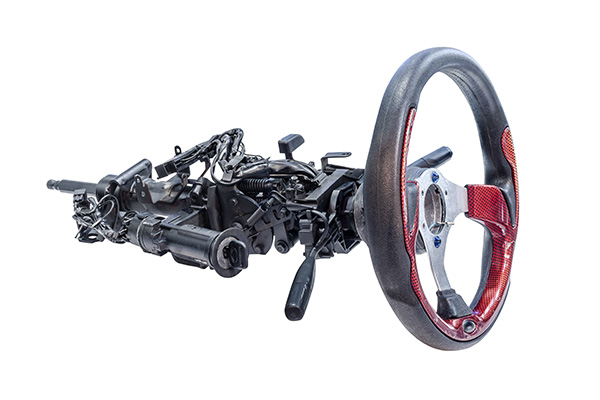
The steering rack is one of the most important parts of your vehicle’s power steering system. It converts the rotation of your steering wheel into side-to-side motion that turns your wheels. This component also controls how evenly and smoothly your car responds to your input while driving. When something goes wrong with the steering rack, it affects not just how the wheel feels in your hands but also how stable and predictable your car becomes.
Steering rack problems often come on gradually. You may feel extra play in the steering wheel, notice strange noises when turning, or experience a general sense that your car is harder to keep under control.
Signs Your Steering Rack May Be Failing
A failing steering rack doesn’t always cause sudden failure. Instead, it sends subtle signals that something is off. Here are some of the most common warning signs:
- Difficulty turning the steering wheel, especially at low speeds
- Clunking or knocking noises when turning
- A loose, shaky, or wandering steering feel
- Uneven tire wear
- Power steering fluid leaks near the front of the car
If you experience more than one of these symptoms, it’s a good idea to have your steering system inspected right away. Small steering issues often get worse over time, especially if left unresolved.
How Rack-and-Pinion Steering Works
Most modern cars use a rack-and-pinion system, which is compact and efficient. It includes a long metal tube (the rack) with gears on one end that connect to the steering column. Inside the housing, a pinion gear rotates when you turn the steering wheel, which moves the rack left or right. The ends of the rack connect to the tie rods, which then push or pull the wheels in the intended direction.
In power steering systems, the rack is assisted by hydraulic or electric systems that make turning easier. Problems with the rack can affect either the mechanical movement or the power assist, depending on what fails.
Unstable Steering and What It Feels Like
When the rack begins to wear out, your car may feel unstable, especially at higher speeds or when cornering. You might notice the steering wheel doesn’t return to center after a turn. Or it may feel like you constantly need to correct the direction, even when driving straight. These symptoms are not just frustrating; they are also dangerous, especially in heavy traffic or poor weather.
Some drivers describe this as “floating” steering, where the car seems to drift from side to side with very little steering input. This can make the car feel unpredictable and reduce confidence behind the wheel.
Fluid Leaks and Hydraulic Rack Failure
If your car uses hydraulic power steering, leaks can also point to rack problems. The rack has seals that contain pressurized fluid. When those seals wear out, the fluid can leak, reducing power assist and damaging other parts of the system. You might notice reddish fluid on the ground or hear a whining noise when turning.
Low fluid levels can also cause the steering pump to work harder than it should, which puts strain on the entire system. Ignoring a leak for too long may result in both rack and pump failure, increasing the repair cost significantly.
The Dangers of Delaying Rack Repairs
A damaged or worn steering rack won’t fix itself. If ignored, it can lead to further damage in the steering and suspension systems. Loose steering parts can accelerate tire wear, throw off alignment, and reduce handling precision. In extreme cases, the rack may lock up or fail entirely, which can be extremely dangerous if it happens while driving.
That’s why prompt diagnosis and repair are essential. Replacing a worn rack restores stability, improves steering response, and protects other components from unnecessary wear.
Not Every Steering Issue Is the Rack
It’s worth noting that not all steering problems are caused by the rack. Tie rods, ball joints, control arms, and bushings also affect how your vehicle steers and handles. A thorough inspection by a skilled technician is the best way to identify whether the rack itself is at fault or if another part is contributing to the instability.
Shops may use diagnostic tools, visual inspections, and test drives to evaluate your steering system. They will also check for leaks, unusual wear patterns, and play in the components.
Steer Safely with Help from Rix Automotive in Mason, OH
If your car feels unstable or your steering isn’t responding like it used to, Rix Automotive in Mason, OH, can help. Our team specializes in diagnosing and repairing steering issues, including worn or leaking racks, tie rods, and suspension components. We’ll make sure your steering system is working exactly as it should, so you can stay in control on every drive.
Call today to schedule your inspection and keep your vehicle handling the way it was meant to.